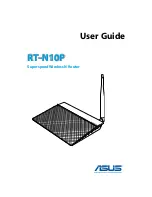
|
NOTICE: The Industry Canada label identifies certified equipment. This certification means that the
|
equipment meets certain telecommunications network protective, operational and safety requirements as
|
prescribed in the appropriate Terminal Equipment Technical Requirements document(s). The Department
|
does not guarantee the equipment will operate to the user’s satisfaction.
|
Before installing this equipment, users should ensure that it is permissible to be connected to the facilities
|
of the local telecommunications company. The equipment must also be installed using an acceptable
|
method of connection. The customer should be aware that compliance with the above conditions may not
|
prevent degradation of service in some situations.
|
Repairs to certified equipment should be coordinated by a representative designated by the supplier. Any
|
repairs or alterations made by the user to this equipment, or equipment malfunctions, may give the
|
telecommunications company cause to request the user to disconnect the equipment.
Users should ensure for their own protection that the electrical ground connections of the power utility,
telephone lines and internal metallic water pipe system, if present, are connected together. This precaution
may be particularly important in rural areas.
CAUTION: Users should not attempt to make such connections themselves, but should contact the
appropriate electrical inspection authority, or electrician, as appropriate.
|
NOTICE: The Ringer Equivalence Number (REN) assigned to each terminal device provides an indication
|
of the maximum number of terminals allowed to be connected to a telephone interface. The termination on
|
an interface may consist of any combination of devices subject only to the requirement that the sum of the
|
Ringer Equivalence Numbers of all the devices does not exceed 5.
|
¹
The Ringer Equivalence Number for the IBM 2212, 4-Port Analog 56K Modem Adapter is: 1.0
|
¹
The Ringer Equivalence Number for the IBM 2212, 2-Port Analog FXO Voice Adapter is: 0.4
|
AVIS: L’étiquette d’Industrie Canada identifie le matériel homologué. Cette étiquette certifie que le matériel
|
est conforme aux normes de protection, d’exploitation et de sécurité des réseaux de télécommunications,
|
comme le prescrivent les documents concernant les exigences techniques relatives au matériel terminal.
|
Le Ministére n’assure toutefois pas que le matériel fonctionnera à la satisfaction de l’utilisateur.
|
Avant d’installer ce matériel, l’utilisateur doit s’assurer qu’il est permis de le raccorder aux installations de
|
l’entreprise locale de télécommunication. Le matériel doit également être installé en suivant une méthode
|
acceptée de raccordement. L’abonné ne doit pas oublier qu’il est possible que la conformité aux
|
conditions énoncées ci-dessus n’empêche pas la dégradation du service dans certaines situations.
|
Les réparations de matériel homologué doivent être coordonnées par un représentant désigné par le
|
fournisseur. L’entreprise de télécommunications peut demander à l’utilisateur de débrancher un appareil à
|
la suite de reparations ou de modifications effectuées par l’utilisateur ou à cause de mauvais
|
fonctionnement.
|
Pour sa propre protection, l’utilisateur doit s’assurer que tous les fils de mise à la terre de la source
|
d’énergie électrique, des lignes téléphoniques et des canalisations d’eau métalliques, s’il y en a, sont
|
raccordés ensemble. Cette précaution est particuliérement importante dans les régions rurales.
|
AVERTISSEMENT: L’utilisateur ne doit pas tenter de faire ces raccordements lui-même; il doit avoir
|
recours à un service d’inspection des installations électriques, ou à un électricien, selon le cas.
|
AVIS: L’indice d’équivalence de la sonnerie (IES) assigné à chaque dispositif terminal indique le nombre
|
maximal de terminau qui peuvent être raccordés à une interface. La terminaison d’une interface
|
téléphonique peut consister en une combinaison de quelques dispositifs, à la seule condition que la
|
somme d’indices d’équivalence de la sonnerie de tous les dispositifs n’excéde pas 5.
F-6
2212 Service and Maintenance
Содержание Cloud Object Storage System Slicestor 2212...
Страница 1: ...2212 Access Utility Service and Maintenance Manual GY27 0362 02...
Страница 8: ...viii 2212 Service and Maintenance...
Страница 28: ...1 20 2212 Service and Maintenance...
Страница 86: ...3 8 2212 Service and Maintenance...
Страница 98: ...5 4 2212 Service and Maintenance...
Страница 110: ...Testing the Adapters 6 12 2212 Service and Maintenance...
Страница 112: ...Assembly 1 Final Assembly IBM 2212 Models 10x A 2 2212 Service and Maintenance...
Страница 114: ...Assembly 2 Final Assembly IBM 2212 Models 15x A 4 2212 Service and Maintenance...
Страница 116: ...Assembly 3 Final Assembly IBM 2212 Models 1xx A 6 2212 Service and Maintenance...
Страница 118: ...Assembly 4 Final Assembly IBM 2212 Models 1xx A 8 2212 Service and Maintenance...
Страница 120: ...Assembly 5 Final Assembly IBM 2212 Models 40x A 10 2212 Service and Maintenance...
Страница 122: ...Assembly 6 Final Assembly IBM 2212 Models 45x A 12 2212 Service and Maintenance...
Страница 124: ...Assembly 7 Final Assembly IBM 2212 Models 4xx A 14 2212 Service and Maintenance...
Страница 126: ...Assembly 8 Final Assembly IBM 2212 Models 4xx A 16 2212 Service and Maintenance...
Страница 130: ...A 20 2212 Service and Maintenance...
Страница 136: ...1 2 3 4 5 6 7 8 9 10 Figure C 1 AC Power Cord Plugs by Country C 4 2212 Service and Maintenance...
Страница 138: ...D 2 2212 Service and Maintenance...
Страница 166: ...E 28 2212 Service and Maintenance...
Страница 195: ......
Страница 197: ...Spine information 2212 Access Utility Service and Maintenance Manual...
















































